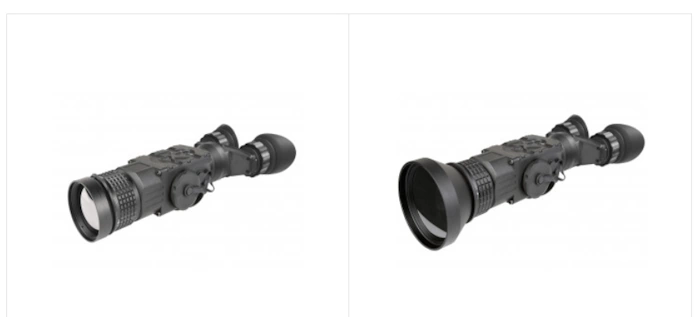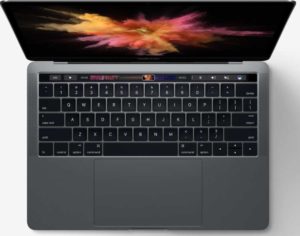Everything You Should Know About Thermal Binoculars to Unlock the Dark
Thermal binoculars have emerged as powerful tools for both professional and recreational use, allowing users to see in the dark and through challenging environmental conditions. These advanced devices utilize thermal imaging technology to detect and display heat signatures, making them invaluable for various applications, including hunting, surveillance, search and rescue, and more.
In this comprehensive guide, we’ll explore everything you need to know about thermal binoculars, from how they work and their key features to their applications and factors to consider when purchasing them.
How Thermal Binoculars Work

At their core, thermal binoculars are designed to detect and visualize variations in temperature, primarily in the form of infrared radiation (heat).
Here’s a simplified overview of how they work.
Thermal Sensor: The heart of a thermal binocular is a thermal sensor, often a microbolometer. This sensor detects the infrared radiation emitted by objects and converts it into an electronic signal.
Signal Processing: The electronic signal is then processed by onboard electronics. This processing involves amplifying the signal and assigning colors or shades to represent different temperature ranges. The resulting image is displayed on the binocular’s viewing screen.
Display: Thermal binoculars typically have an OLED or LCD display that shows the thermal image. This display allows users to see temperature variations and heat sources as distinct shapes and colors against a background.
Optics: Thermal binoculars also feature traditional optics (lenses and prisms) to provide magnification and focus capabilities, similar to conventional binoculars. These optics allow users to zoom in on specific areas of interest.
User Interface: Thermal binoculars come with user-friendly controls for adjusting settings such as brightness, contrast, and zoom. Some models even offer color palettes to enhance image clarity in different conditions.
Key Features of Thermal Binoculars
Now, let’s delve into the key features that make thermal binoculars so versatile and powerful.
Thermal Sensitivity: The ability to detect subtle temperature differences is crucial for thermal binoculars. High thermal sensitivity allows them to identify targets at longer distances and in various weather conditions.
Resolution: Resolution determines the level of detail in thermal images. Higher resolution provides clearer and more detailed imagery, which is essential for precise target identification.
Magnification: Thermal binoculars come with varying levels of magnification, typically ranging from 2x to 8x or more. Higher magnification allows users to see distant objects more clearly but may reduce the field of view.
Field of View: The field of view (FOV) refers to the width of the scene visible through the binoculars. A wider FOV is advantageous for tracking moving targets or scanning large areas, while a narrower FOV is suitable for detailed observation.
Refresh Rate: The refresh rate determines how quickly the thermal image updates. A higher refresh rate results in smoother and more natural-looking images, which are crucial for fast-moving subjects or when panning the binoculars.
Color Palettes: Many thermal binoculars offer various color palettes (e.g., black-hot, white-hot, ironbow) to enhance image contrast and visibility in different conditions. Users can choose the palette that suits their preferences and needs.
Recording and Connectivity: Some thermal binoculars are equipped with recording capabilities, allowing users to capture photos and videos of their observations. Wi-Fi or Bluetooth connectivity may also be available for sharing or transferring images and data.
Battery Life: Battery life is a critical consideration, especially for extended use in the field. Look for thermal binoculars with efficient power management systems that maximize operating time.
Applications of Thermal Binoculars
Thermal binoculars find applications in a wide range of fields and activities.
- Hunting
Enhanced Night Hunting: Hunters use thermal binoculars to spot game in low-light or complete darkness, extending their hunting hours and increasing success rates.
- Law Enforcement and Military
Surveillance and Reconnaissance: Law enforcement and military personnel rely on thermal binoculars for covert surveillance, reconnaissance, and target acquisition, even in challenging conditions.
- Search and Rescue
Locating Missing Persons: Search and rescue teams use thermal binoculars to locate individuals in remote or obstructed areas, where conventional search methods may be ineffective.
- Wildlife Observation
Nocturnal Wildlife Studies: Researchers and wildlife enthusiasts use thermal binoculars to observe and study nocturnal animals without disturbing their natural behavior.
- Security
Perimeter Monitoring: Security professionals employ thermal binoculars for nighttime surveillance and monitoring of large areas, helping detect intruders or potential threats.
Factors to Consider When Buying Thermal Binoculars
When purchasing thermal binoculars, several factors should guide your decision.
Budget: Set a budget that aligns with your requirements and expectations. Thermal binoculars come in various price ranges, so determine how much you are willing to invest.
Purpose: Consider your intended use and select thermal binoculars with features that align with your specific needs, whether it’s hunting, surveillance, or outdoor exploration.
Resolution: Choose a thermal binocular with suitable resolution based on the level of detail you require for your observations.
Magnification: Determine the magnification level that suits your application, balancing the need for zoom with the desire for a wider field of view.
Battery Life: Evaluate the thermal binocular’s battery life and ensure it can meet your operational demands without frequent recharging.
Durability: Check for features like waterproofing, shock resistance, and rugged construction, especially if you plan to use the binoculars in harsh environments.
User Interface: Consider the ease of use and accessibility of controls, as well as the clarity of the display.
Additional Features: Review any extra functionalities such as recording capabilities, connectivity options, color palettes, and image enhancement modes, and assess their relevance to your needs.
Care and Maintenance of Thermal Binoculars
To ensure the longevity and optimal performance of your thermal binoculars, it’s essential to follow proper care and maintenance practices:
- Protective Accessories
Invest in lens caps, protective covers, and cases designed for thermal binoculars. These accessories shield the lenses and the device itself from dust, debris, and potential damage.
- Cleaning
Regularly clean the lenses and the body of your thermal binoculars using a soft brush or lens cleaning cloth. Avoid using abrasive materials or harsh chemicals that could scratch or damage the lenses.
- Battery Management
Monitor the battery level and recharge or replace the batteries as needed. It’s advisable to carry spare batteries when using thermal binoculars in the field.
- Storage
Store your thermal binoculars in a cool, dry place when not in use. Ensure they are protected from extreme temperatures, humidity, and direct sunlight.
- Avoid Exposure to Bright Light
Thermal sensors can be sensitive to sudden exposure to bright light sources, such as the sun. To prevent damage, avoid pointing your thermal binoculars directly at intense sources of light.
- Firmware Updates
Check for firmware updates provided by the manufacturer. These updates may enhance the performance or add new features to your thermal binoculars.
- Regular Inspection
Periodically inspect your thermal binoculars for signs of wear, loose parts, or damage. Address any issues promptly to prevent further deterioration.
- Calibration
Some thermal binoculars may require occasional recalibration to maintain accuracy. Refer to the manufacturer’s instructions for guidance on calibration procedures.
- Professional Servicing
If you encounter significant issues or your thermal binoculars require extensive maintenance or repairs, seek the assistance of a qualified technician or the manufacturer’s service center.
Final thoughts
Thermal binoculars are powerful devices that provide users with the ability to see in the dark and through challenging conditions. Understanding how thermal binoculars work, their key features, applications, and the factors to consider when purchasing them will help you make an informed decision. With the right thermal binoculars in your hands, you can unlock a world of unseen wonders and improve your effectiveness in various fields of endeavor.


